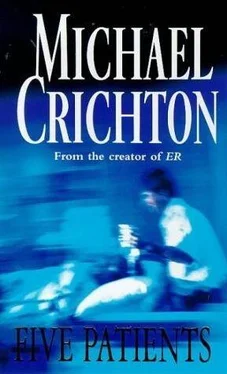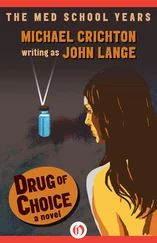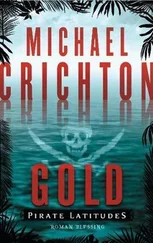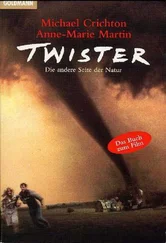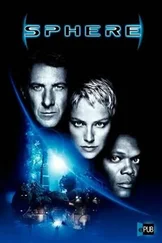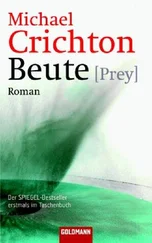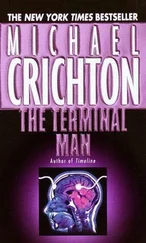Michael Crichton - Five Patients
Здесь есть возможность читать онлайн «Michael Crichton - Five Patients» весь текст электронной книги совершенно бесплатно (целиком полную версию без сокращений). В некоторых случаях можно слушать аудио, скачать через торрент в формате fb2 и присутствует краткое содержание. Жанр: Триллер, на английском языке. Описание произведения, (предисловие) а так же отзывы посетителей доступны на портале библиотеки ЛибКат.
- Название:Five Patients
- Автор:
- Жанр:
- Год:неизвестен
- ISBN:нет данных
- Рейтинг книги:5 / 5. Голосов: 1
-
Избранное:Добавить в избранное
- Отзывы:
-
Ваша оценка:
- 100
- 1
- 2
- 3
- 4
- 5
Five Patients: краткое содержание, описание и аннотация
Предлагаем к чтению аннотацию, описание, краткое содержание или предисловие (зависит от того, что написал сам автор книги «Five Patients»). Если вы не нашли необходимую информацию о книге — напишите в комментариях, мы постараемся отыскать её.
Five Patients — читать онлайн бесплатно полную книгу (весь текст) целиком
Ниже представлен текст книги, разбитый по страницам. Система сохранения места последней прочитанной страницы, позволяет с удобством читать онлайн бесплатно книгу «Five Patients», без необходимости каждый раз заново искать на чём Вы остановились. Поставьте закладку, и сможете в любой момент перейти на страницу, на которой закончили чтение.
Интервал:
Закладка:
No one knows when the first transfusion was performed, but it was certainly a long time ago, for the efficacy of blood was highly regarded in ancient times. In early accounts, it is not clear whether the blood was transfused or drunk, since both methods were considered useful. Celsus, in Roman times, refers to treatment of epilepsy by drinking the hot blood from the cut throat of a gladiator. The Mongols, living in a horse culture, often drank horse blood for sustenance.
The idea of intravenous injection is also old. Ovid relates that Jason was helped by Medea with an injection of "succis" into his jugular vein.
Behind the early interest in transfusion was the quite logical notion that an illness involving blood loss was best treated with blood replacement. Early materials for this were primitive-needles made of quills and bone, tubing formed from bladders or leather. In many cases, animal blood was transfused to human beings, often with the addition of semen, urine, and other substances thought to be invigorating.
It is not surprising that patients often died from this procedure. Donors often died, as well. In a famous instance, Pope Innocent VIII received a transfusion from three young boys in 1492. The donors as well as the recipient expired within a few days.
In the eighteenth century, when better materials were available and more careful observation the rule, it became clear that certain patients benefited from transfusion but others did not. This early notion of the "transfusion reaction" evolved slowly, culminating in Karl Landsteiner's discovery in 1900 of A, B, and O blood groups. This represented the first clear, unequivocal statement that all blood was not the same. For more than a decade after Landsteiner's work, there was no practical clinical method of differentiating blood groups. The search for such techniques is a direct forerunner of modern tissue-typing methods for transplantation of other organs.
Just as the matching of donor and recipient was a problem, so was storage of the organ. Untreated, blood clots soon after it is drawn. It was not until 1916 that blood could be kept refrigerated for two weeks in glass bottles, with the addition of anti-coagulating substances. And it was not for more than twenty years after that that clinical blood banking began on any scale in this country. There was no important improvement in storage techniques until 1952, when glass bottles were replaced by plastic bags, which preserved blood elements much better.
More recently has come the ability to store frozen blood. This single technical capability has solved several traditional banking problems, and indeed is now integral to the MGH function: most open-heart cases are done with frozen blood [Dr. Charles Huggins, an MGH surgeon, was one of the pioneers in making frozen blood practical for clinical use].
Formerly, all blood had to be used within three weeks. Now it can be stored at -120° F. for five years or more. In the past, patients had to be matched to their own blood type. Now, the freezing-thawing process washes out serum antibodies, which means that type O frozen blood can be transfused to anyone, regardless of his blood type. The need for the bank to stock many different blood types is therefore reduced.
And, finally, there is evidence that the risk of hepatitis, a traditional problem with transfusions, is reduced when frozen blood is used.
There are, of course, some drawbacks to frozen blood. It is more expensive at the present time. Also, some blood components, notably platelets, which are important to clotting, are lost and must be supplied separately. But there are easy techniques for this.
In fact, the products of the modern blood bank are increasingly sophisticated. In 1942, the bank produced only two products-whole blood and plasma (the liquid portion without the cells). But it is now possible to give whole blood, or packed red cells without plasma, or platelets; it is possible to give plasma, or only the protein from the plasma, or only specific parts of the total protein without the others. Each of these specialized blood bank products is becoming increasingly important to the conduct of modern medicine.
What has all this meant to surgery? As it has become more scientific and more complex, a certain amount of the drama and flair, the spectacle that Warren remembered, has disappeared-or at least become muted, until it is hardly recognizable.
On Saturday mornings at the hospital, surgical clinics are held for students in which patients are presented pre-operatively and then the students are invited to watch the procedures from the several overhead viewing galleries. This teaching exercise is the last remnant of a proud tradition of surgical spectacle. Dr. E. D. Churchill, former MGH Chief of Surgery, gives the following account:
The display of operations at the Hospital on Saturday mornings continued well into the 1920's. Unusual cases were assembled so that the senior surgeons on duty could have an impressive list of operations scheduled for the amphitheater. The two services, East and West, vied with each other in trying to stage the better show. In the Surgical Building, opened in 1900, the display reached major proportions. When the morning's list was a long one, an operation would be started in a small room and then the entire outfit trundled like a troupe of gypsies into the pit of the amphitheater, where the crucial phase of the procedure was demonstrated to the visiting doctors. The surgeons would be allotted, say, fifteen minutes. Whether or not the operation had been completed, at the expiration of the allotted time the tents were folded, the troupe moved off stage to complete the operation elsewhere, and a new act took over… Great weight was placed on the speed and daring of the operator… Tension mounted when some prima donna showed reluctance to withdraw from the spotlight and overstayed his time to hold the audience spellbound in an ad lib recounting of his surgical prowess.
The prowess of the surgeon has steadily increased since then, to the point where reconstructing a nearly severed hand is, if not commonplace, at least nothing to get very excited about.
And if, in this age of television, the surgeon shows more flamboyance than is scientifically necessary, more sense of drama than is medically indicated, he can at least be excused for upholding the traditions of his calling-and, in a deeper sense, the facts of his life.
Sylvia Thompson. Medical Transition
Flight 404 from Los angeles to boston was somewhere over eastern Ohio when Mrs. Sylvia Thompson, a fifty-six-year-old mother of three, began to experience chest pain.
The pain was not severe, but it was persistent. After the aircraft landed, she asked an airline official if there was a doctor at the airport. He directed her to the Logan Airport Medical Station, at Gate 23, near the Eastern Airlines terminal.
Entering the waiting area, Mrs. Thompson told the secretary that she would like to see a doctor.
"Are you a passenger?" the secretary said.
"Yes," Mrs. Thompson said.
"What seems to be the matter?"
"I have a pain in my chest."
"The doctor will see you in just a minute," the secretary said. "Please take a seat."
Mrs. Thompson sat down. From her chair, she could look across the reception area to the computer console behind the secretary, and beyond to the small pharmacy and dispensary of the station. She could see three of the six nurses who run the station around the clock. It was now two in the afternoon, and the station was relatively quiet; earlier in the day a half dozen people had come in for yellow fever vaccinations, which are given every Tuesday and Saturday morning. But now the only other patient she could see was a young airplane mechanic who had cut his finger and was having it cleaned in the treatment room down the corridor.
Читать дальшеИнтервал:
Закладка:
Похожие книги на «Five Patients»
Представляем Вашему вниманию похожие книги на «Five Patients» списком для выбора. Мы отобрали схожую по названию и смыслу литературу в надежде предоставить читателям больше вариантов отыскать новые, интересные, ещё непрочитанные произведения.
Обсуждение, отзывы о книге «Five Patients» и просто собственные мнения читателей. Оставьте ваши комментарии, напишите, что Вы думаете о произведении, его смысле или главных героях. Укажите что конкретно понравилось, а что нет, и почему Вы так считаете.
